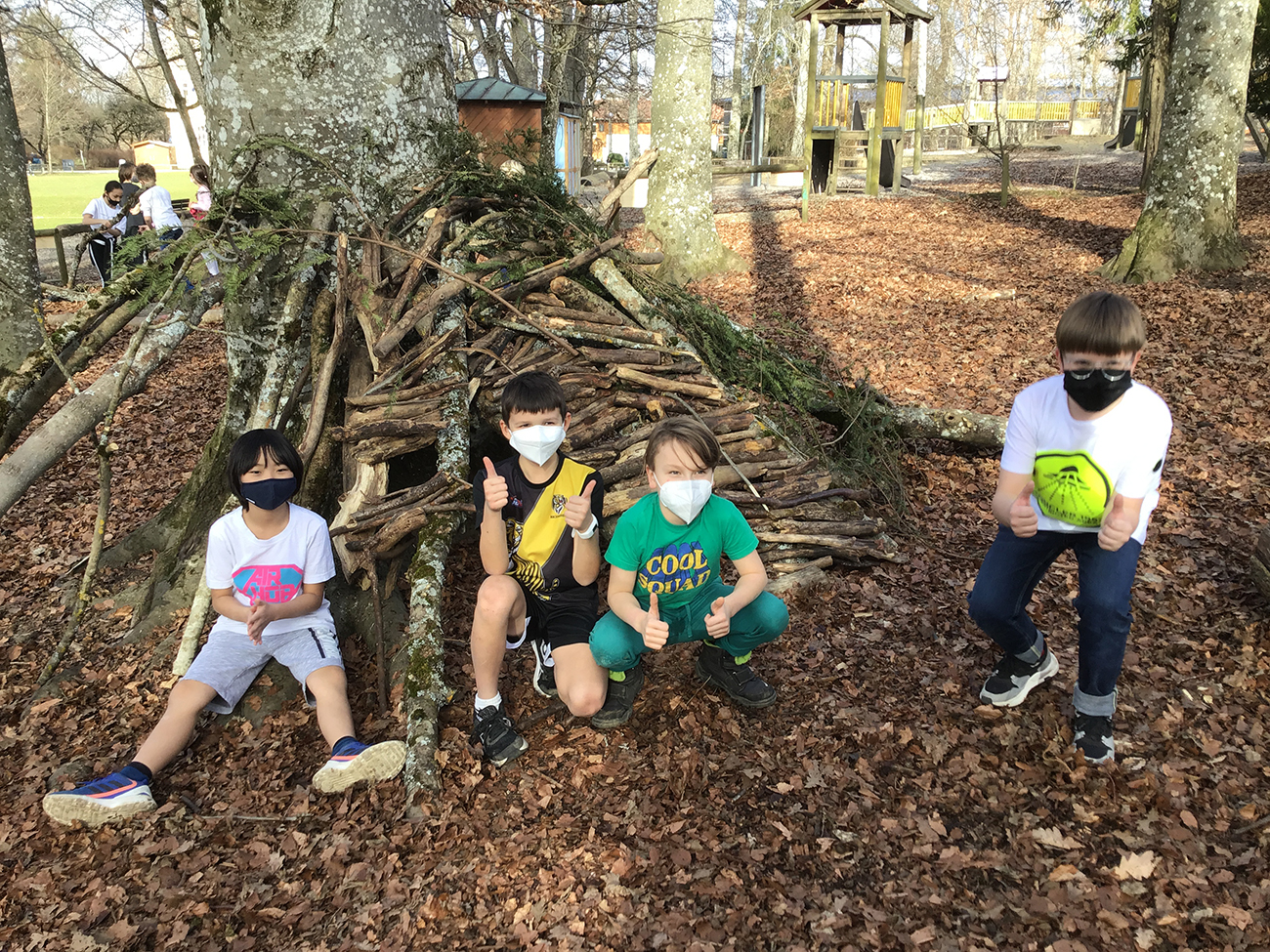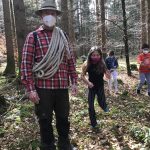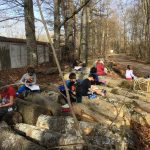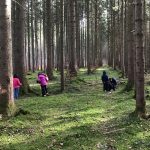The coronavirus pandemic has forced us to think about what is important in life. Increasingly, nature and the environment become more vital as part of the healing and balance with the current demands placed upon us by the pandemic. Part consciously and but often unknowingly, we gravity to nature. The smallest of green spaces have been rediscovered and revered.
School is no different. Ignored and underutilised outdoor spaces have come to life with activity on many school grounds. Priorities are not entirely changing; they have often already been there. However, our commitments strengthened and are being expedited in what we always knew was important, the great outdoors.
New curriculum?
There is a misconception that to learn outdoors, a separate curriculum is required or extra time. What we do indoors can be done outdoors or augmented by our natural surroundings, just slightly different and frequently better. Learning outdoors is better because it provides a context where students are more able to internalise learning and generalise their school learning to broader contexts and life. School learning should be about life lessons, not one-off lessons. The IB curriculum has a conceptual framework that allows it to be applied to any context. Rather than a separate curriculum, we must embrace challenge, embed understanding and learn with our students in different spaces. Learning outdoors can have many challenges and tremendous opportunity. Learning outdoors should not be avoided because of angst. We are wrong to think that it is safer and healthier to learn indoors. To learn outdoors means multiple sensory input which is why students learn better outdoors. Our brains are more active when we experience the smells, winds, uneven wet and dry ground, sounds, and temperatures less controlled and an environment less sterile. The irony is that what is considered by some to be the less sterile outdoors is healthier than being indoors.
There is an expression, children are always learning, they might not be learning what you want them to learn, but they are learning. The challenge is to focus on the lesson objectives or outcomes and integrate learning objectives in real life contexts including the outdoors. The more time spent active and outdoors, the better students are able to self-regulate and focus which leads to better learning inside or outside. The more time spent outside, the healthier and happier the students (as are all people). The more time spent outdoors as a younger child, the stronger the connection to nature, the more likely the children will be active in nature as an adult and contribute to conserving and protecting nature. The mere sight of ungroomed wild green spaces improves our learning and is enhanced by our proximity to the wild green space and magnified by our entering and visiting this wild green space. Students are more motivated to learn when learning outdoors. Many research studies have proved the benefits of nature and learning outdoors leading some national curriculums to propose outdoor learning become mandatory in schools.
Where do we go from here?
Starting simple is always the easiest and best. In Japan and recommended by the World Economic Forum, people of all ages have shown to improve their health by ‘Forest Bathing’ which is a form of a mindful walk. The simple presence in a forest with no learning or specific objective improves mental and physical health. At Munich International School, we are easily able to take advantage of our local forest. What if ‘home room’ or responsive classroom lessons took place on a short walk? Trees have been trimmed and their remnants saved for tree stumps to sit on for a class meeting or tree slices for a working ‘tablet’ to create on or with in lessons. Many more seated spaces are available, highly used and valued outside. Language, maths, art, music, physical education, drama, making and other lessons are having an outdoor learning component. Most importantly is valuing the students’ perspectives and respecting the ways they identify to learn outdoors. For example, a IB Diploma student requested that drama and language lessons be conducted outdoors. Students asked if students could walk and discuss the literature rather than sit at their desks. Teachers often walk during their breaks or meetings with many health and cognitive, creative thinking benefits.
A group of students at Munich International School have dedicated their service to developing Outdoor Learning at our school. For three years, the students have met regularly to put forward a concept and pedagogical principles for learning outdoors. Their work includes reviewing the grounds, meeting with foresters, administration, landscape architects, presenting to teachers and staff, surveying students on their preferences, writing grants and participating in the recent Strategic Planning Committee with the focus on learning spaces.
Armin Martin
MIS Teacher of Technology, Inquiry & Making
*Who else is learning outdoors: American International School of Vienna, Frankfurt International School, International School of Düsseldorf, International School of Zug and Luzern, International School of Amsterdam





